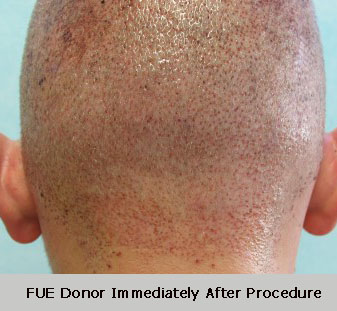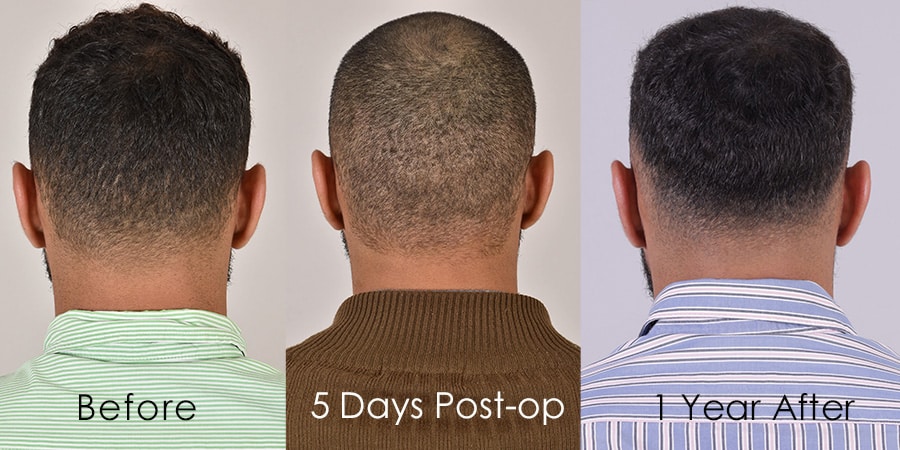FUE Hair Transplant

Explaining The FUE Method
Follicular Unit Extraction (FUE), also known as FUE Hair Transplantation, enables patients to maintain short donor hair without visible scarring.
Traditional follicular unit hair transplantation leaves a small linear scar, potentially visible if the patient shaves their head. FUE avoids this by individually extracting follicular units, resulting in virtually scarless donor areas. However, the procedure is more time-consuming and transplants fewer hairs compared to strip harvesting.
While FUE is popular among young men seeking styling flexibility, it requires scalp shaving before harvesting, which may not be suitable for many women who prefer FUT donor strip harvesting.
Additionally, we offer medical therapy for early-stage or long-term hair loss maintenance.
NO Linear Donor Scar
Strip harvesting creates a linear scar, which can be a concern for those wanting short hairstyles. FUE, touted as less invasive and scar-free, still creates tiny circular scars, typically invisible and well-covered by surrounding hair.
NO Linear Donor Scar
 Strip harvesting creates a linear scar, which can be a concern for those wanting short hairstyles. FUE, touted as less invasive and scar-free, still creates tiny circular scars, typically invisible and well-covered by surrounding hair.
Strip harvesting creates a linear scar, which can be a concern for those wanting short hairstyles. FUE, touted as less invasive and scar-free, still creates tiny circular scars, typically invisible and well-covered by surrounding hair.

What To Expect With Dr. Katona’s FUE Hair Restoration Method
Dr. Katona specializes in the delicate FUE process, ensuring:
- No linear scar
- Minimal invasiveness with local anesthesia, often resulting in little to no pain
- A comfortable procedure lasting 4-8 hours
- Transparent pricing with no hidden fees
- Gradual hair growth within 3 months
- Guaranteed great results
Benefits of the FUE Technique
- No strip scar, shorter recovery, and natural-looking results
- Flexibility in donor areas selection
- Utilization of finer hair for a natural hairline
- Preserves natural hair growth angles and hair shaft diameter gradation
- Less invasive than strip surgery
- Incorporation of PRP and ACell for accelerated healing and donor hair regeneration
Therefore, FUE Hair Transplant is favored for its shorter recovery, natural results, and minimal discomfort. Dr. Art Katona at Katona Hair, trusted by top celebrities, offers free consultations for those seeking a permanent solution to hair loss or thinning.
